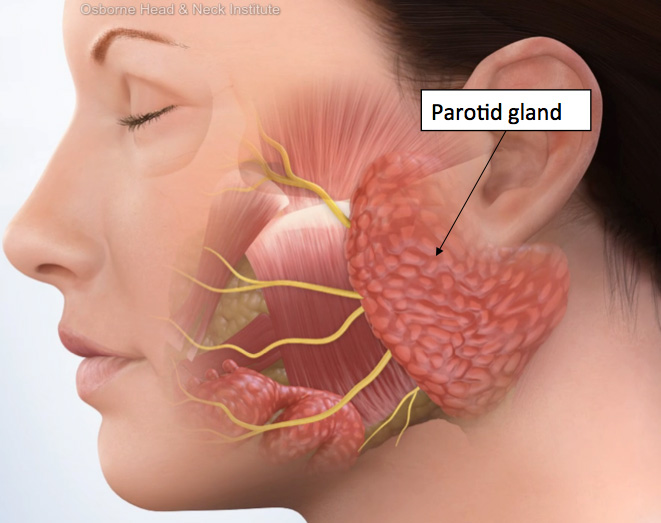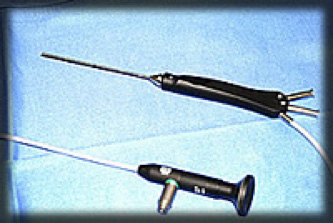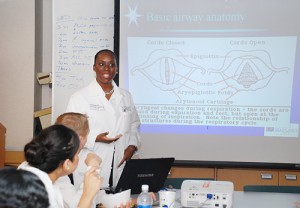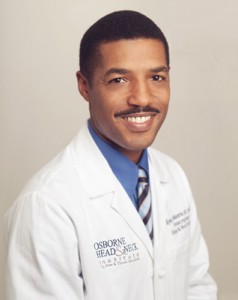- India Medical Mission 2018 - November 1, 2018
- Sleep Disorders: Sleep Apnea and Upper Stimulation Therapy - August 25, 2015
- The Naked Vocalist Podcast Featuring Dr. Reena Gupta - May 27, 2015
- New Therapy for Sleep Apnea – First Sleep Pacemaker placed in California at Osborne Head and Neck Institute. - December 12, 2014
- Boxer’s Ear: Can your ear explode? - December 12, 2014
- Nose Picking (Rhinotillexis) and Septal Perforations: Why I should stop picking my nose…? - November 24, 2014
- Deviated Septum and Septal Perforation - July 28, 2014
- Hereditary Hemorrhagic Telangiectasia: Nasal Septal Perforation Repair - June 25, 2014
- Dr. Mantle recognized at the Beverly Hills Medical Science Academy Awards - May 8, 2014
- Commonly Misdiagnosed Pathologies: Arteriovenous Malformations - April 9, 2014

How do you treat salivary gland infections in children?
Question: My son has a painful, swollen red cheek. This has happened twice before and antibiotics have helped but I don’t want my child to keep taking antibiotics. My pediatrician is suggesting he see a specialist to determine treatment options for a “salivary gland” infection. What can I do to help my son?
Discussion:
Salivary glands are normal tissues responsible for the production of saliva and are located in the cheeks, and under the jaw, and under the tongue. The salivary glands produce saliva which drain through a large tube, called a duct. The salivary gland located in the cheek is called the parotid gland.

If a salivary duct becomes blocked or narrowed, saliva does not drain properly resulting in a backup. This backup of saliva commonly leads to an infection of the gland, called sialadenitis. When this occurs in the parotid gland, it is called parotitis. Parotitis results in painful swelling of the cheek.
Parotitis in children may develop from:
- Duct narrowing due to chronic infection or inflammation
- Salivary gland stone (a calcified mass in the duct)
- A tumor or growth in the gland
Sialadenitis can be treated with antibiotics, sialagogues (sour candy), hydration, gland massage, and warm compresses. While these methods are usually effective, some children may experience recurrent episodes of parotitis, or juvenile recurrent parotitis (JRP). These children are often on repeated courses of antibiotics over the course of several years. While antibiotics may temporarily treat sialadenitis, they are not without risks and do not address the underlying issue.
Previously, the only available options were repeated courses of antibiotics or removal of the entire salivary gland, which risks scarring, facial nerve injury, and facial deformity. The development of a minimally-invasive procedure, called sialendoscopy, has given these children another option.
 Sialendoscopy allows for the simultaneous diagnosis and treatment of the child’s salivary gland problem. In this outpatient procedure, a tiny camera (endoscope) is inserted into the natural opening of the salivary duct which is located in the mouth. The duct is then inspected to diagnose the cause of the child’s problem. Once the diagnosis is made (i.e., duct narrowing, stone, etc), it may be treated (i.e., widening the duct, removing the stone, etc).
Sialendoscopy allows for the simultaneous diagnosis and treatment of the child’s salivary gland problem. In this outpatient procedure, a tiny camera (endoscope) is inserted into the natural opening of the salivary duct which is located in the mouth. The duct is then inspected to diagnose the cause of the child’s problem. Once the diagnosis is made (i.e., duct narrowing, stone, etc), it may be treated (i.e., widening the duct, removing the stone, etc).
The benefits of sialendoscopy are:
- Outpatient procedure – no hospital stay
- Minimally invasive
- Minimal discomfort
- Quick return to normal activities
- No incision and no scar
- No risk to important nerves as compared to gland removal
This challenging procedure has been mastered by only a few surgeons worldwide. It is critical when selecting a surgeon to be sure they are experienced in pediatric sialendoscopy. This simple procedure may result in a definitive cure for your child’s salivary gland problem.
Key Points:
- Salivary glands are normal tissues located in the cheeks, under jaw, and beneath the tongue; they are responsible for the production of saliva.
- Saliva normally drains into the mouth through a small network of tubes called salivary ducts.
- Children may develop recurrent infection of salivary glands, requiring antibiotics each time. They may also develop a stone in the gland which can cause infection.
- Sialendoscopy is an innovative procedure that can treat salivary gland infections permanently, so your child can avoid repeated courses of antibiotics
- When selecting a specialist it is essential to ensure that they are skilled in the performance of sialendoscopy procedures.
To learn more about Dr. Belinda Mantle or pediatric sialendoscopy, please visit www.ohni.org.



